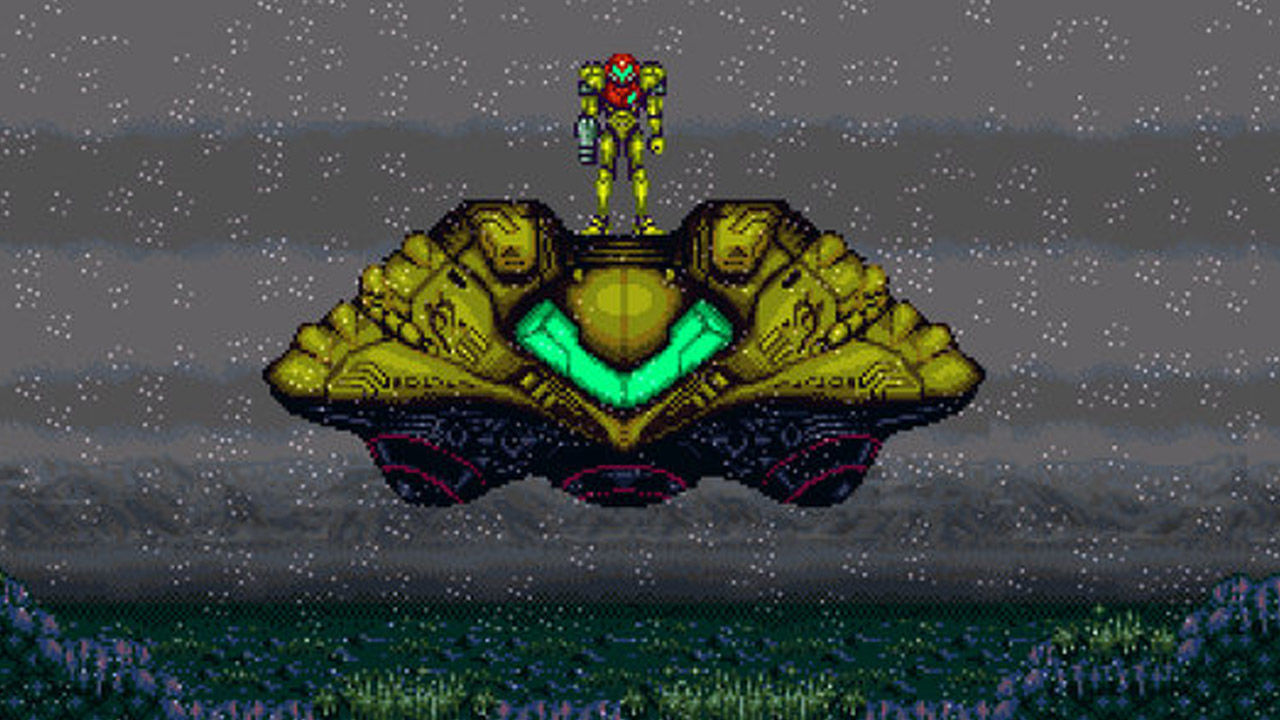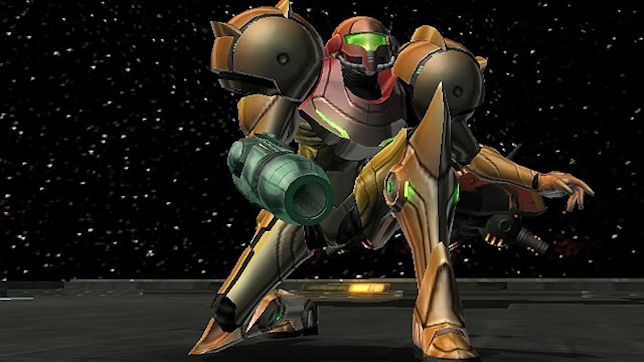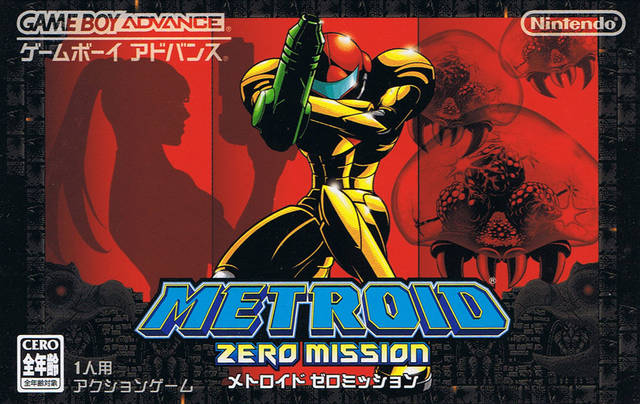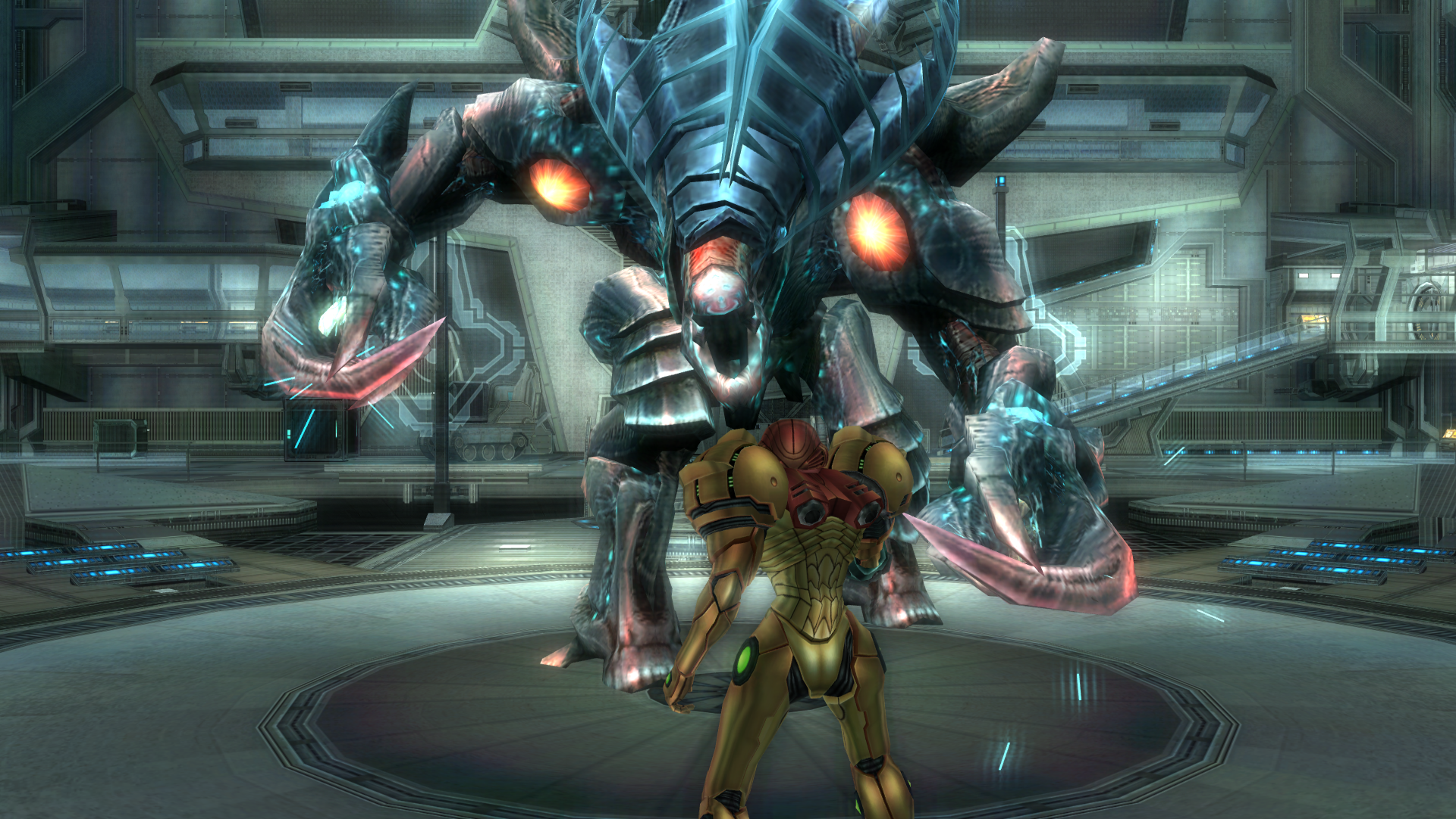Metroid 30th Anniversary: The Evolution of Samus

Metroid, every Metroid sequel, every Metroid spinoff, and even the much wished for Metroid NX; all of them are outliers and outcasts in the Nintendo pantheon. Samus Aran, from her humble origins as a bounty hunter to her destiny as a genetically mutated super freak, is not like her peers Mario, Kirby, Link, or Little Mac. History is what separates Metroid from the Nintendo pack. From the first sequel on Game Boy on, Metroid has clung to continuity with an evolving story to go along with its heroine’s evolving skills. On August 6th, her 30th birthday, we look back at Samus’ trials and growth, exploring how she’s changed in each game she’s starred in in order of release.
Metroid (1986)
Samus learned tricks in 1986’s Metroid that have stuck around throughout the series. Her yellow and red power suit, an iconic cross between ‘80s anime style and the look of a real astronaut’s suit, gained most of its mainstay abilities. High jump for reaching tall ledges in the game’s trademark interlocking environments, missiles to supplement her adaptable blaster and its various beams including ice and wave, the Varia Suit (a mistranslation of Barrier Suit) for extra defense, and bombs for revealing hidden passages. Most iconic is the Morph Ball, the ability to curl up like a pill bug and roll around through cramped passages. This is the first and last time Samus could fight parasitic space jellyfish--that’s what Metroids are dontcha know--and evil pirate brains in a purple leotard and legwarmers. Then again, that look really wouldn’t work outside 1986.
Metroid 2 (1990)
Nintendo had toyed with direct sequels prior to Metroid 2: The Return of Samus, but even back to back stories like The Legend of Zelda and Zelda 2: The Adventure of Link were distinguished by different styles of play. Samus’ quest to literally eradicate the entire Metroid species following Metroid 1 was a direct continuation and further exploration of the ideas in the original. There were key differences in addition to slight environmental changes. First, Samus was more detailed on the inferior hardware. A big sprite with beautiful flourishes and detailing on the power suit gave us a much better view of the hero. Plus, she got new abilities like the Spider Ball, letting her cling to walls in morph ball mode, and the Space Jump which let her jump forever. She also meets a baby Metroid that thinks she’s its mommy. This causes problems later on.

Super Metroid (1994)
Super Metroid’s influence on modern gaming cannot be overstated. Less punishing and oblique than Metroid, more expansive and narratively rich than Metroid 2, and far bigger than both, it is the standard by which the rest of the series as well as descendants like Axiom Verge, Ori and the Blind Forest and many others are judged. Samus gained even more abilities: a new electric grappling hook, the Gravity Suit for navigating underwater, a speed booster for running fast enough to tear down walls and the ability to jump off of sheer surfaces. She gained even more physical detail that further informed her character; her shoulders heaved with deep, steady breaths demonstrating calm and poise in high pressure situations. This was also the first time Samus spoke, narrating the game’s opening through text. Her baby metroid pal showed up again too, all grown up and ready to cause deep rooted psychological trauma.
Metroid Prime (2002)
Metroid Prime represented two dramatic shifts for the series. It marked the series’ first foray into the third dimension, but ultimately the presentational change affected the feel of Metroid less than its change in perspective. Rather than seeing Samus run around her world, the game is played from her point of view. Outside of brief scenes where the camera switches to show Samus posing on an elevator or pulling off some fancy moves, the only time she’s physically seen is in the reflection of her own visor. The effect is profound and intimate. It also helps contextualize some changes in her abilities. Samus can now use multiple visors to see through walls, detect heat signatures, and scan information. The result is a Metroid that emphasizes lengthy fights against squirrelly monsters more than in previous games.

Metroid Fusion (2002)
To date, Metroid Fusion--or Metroid 4 if you prefer--is the furthest point on Samus’ timeline and it entails the biggest change in the character. There are new abilities as always, but the ability to hang off of ledges is certainly less significant than the loss of Samus’ basic humanity. Following the events of Super and Other M, Samus joins a crew exploring SR-388 after it had been de-Metroided in Metroid 2 and discover its been overrun by X, a parasitic organism that was kept in check by those space jellyfish. Not getting a chance to reflect on how her role in an extinction event screwed an entire planet, Samus is infected by X necessitating emergency medical attention. She only survives because she’s infused with metroid DNA to fight the X. DUN DUN DUUUUUUUUN. In addition a snazzy new look with turquoise highlights, Samus also has the ability to absorb energy from X parasites to survive and gain new abilities. Fusion also gives Samus further voice, with narrated interludes where she reflects on her relationship with Adam, an AI based on a former commander. Fusion gave players less freedom than past games but it also expanded Samus’ character in fascinating ways that still haven’t been explored 14 years later.
Metroid Zero Mission (2004)
Taking the story and cartoon style of Fusion, Zero Mission retold Samus’ very first adventure while making some significant changes to her history. Prior to this game, Samus’ history being raised by the Chozo--freaky alien bird scientist mystics and the creators of her power armor--was always left to textual backstory, little nuggets in Metroid Prime’s data logs or the games’ manuals. Here, though, we’re actually treated to scenes at the end where drawings of young Samus and her bird pals are left in the alien architecture of the planet Zebes, recontextualizing her war against Mother Brain and the Space Pirates as a revenge story. Powerful stuff! This also the only other time in a main Metroid game where Samus is playable outside of her power armor. Zero Suit Samus as the Smash Bros kids call her is more than Leotard Samus from the NES original. She’s vulnerable but adept at stealth, sporting a snazzy stun gun for rough situations.
Sign up to the GamesRadar+ Newsletter
Weekly digests, tales from the communities you love, and more

Metroid Prime 2: Echoes (2004)
Known for its difficulty, confusing structure, and grimey art style, Metroid Prime 2: Echoes is a strange entry in the Metroid saga. In terms of how it changed Samus’ character, it is from one perspective the game where she’s most physically vulnerable. Shifting between light and dark dimensions on the planet Aether, Samus is constantly poisoned by the atmosphere of the dark world, and has to constantly collect ammunition for light-attuned weapons. Her suit changes in strange new ways over the course of the game, including a desert punk Mad Max affair that gives her greater defense against Aether’s atmosphere and a rounded, IKEA-shiek white and grey suit that literally lets her ride beams of light. It’s occasionally infuriating to play, but it’s ideas are visually arresting.
Metroid Prime Pinball (2005)
Then there was that time she was a pinball. It’s canonical. Look it up.
Metroid Prime Hunters (2006)
The weakest of the portable Metroids, Metroid Prime Hunters feels like a step back after twenty years of progress for Samus. It’s a truncated version of her Gamecube adventures with an ill-advised emphasis on multiplayer combat that was clearly born of the massive, all-encompassing popularity of multiplayer shooters that took root ten years ago. If there’s any significant change, it’s insight into Samus’ professional life. This is the first time she crosses paths with other bounty hunters and they’re kind of a bunch of jerks. Rock monster jerks.

Metroid Prime 3: Corruption
The grand conclusion to Retro Studios’ Metroid Prime trilogy further fleshed out Samus’ universe for good and ill, resulting in a fun game that was nonetheless awkward because of some presentational choices. Samus meets even more bounty hunters and this time they can even speak. Samus, however, cannot. Even though we got plenty of text narration from her in Super, Fusion, and Zero Mission, Samus is mute in Prime 3 which makes her big confrontations with her brainwashed bounty hunting peers seems strange. Maybe she had a cold? It wasn’t especially clear. Unfortunately when Samus did speak in her next game, it made a great deal of people very angry.
Metroid: Other M
Despite what you’ve heard, Metroid: Other M is not a bad game. As far as three-dimensional games focused on exploration and figuring out to get through multi-layered mazes go, it’s very good with some inspired set pieces dropping Samus into weird holographic landscapes inside a deteriorating space station. She also controls very well in three dimensions but cut free from the first-person perspective, at least as well as any 3D character can when still shackled to the Wii’s limited controller. She also feels dynamic as a fighter, flipping around to dodge and attack chunky lizard weirdoes with style. The problem isn’t the action: it’s the story that contradicts the silent confidence of the character in Super Metroid and the frustrated, competent professional in Metroid Fusion. Taking place between those two games, Other M portrays Samus as an emotionally distant trauma survivor scarred by the death of the baby Metroid in Super Metroid and conflicted about her paternal relationship with Adam, a Galactic Federation officer that was her mentor and who dictates when and how she can use her abilities in this game. The premise wouldn’t be terrible if explored elsewhere in her story, but the bad writing, alienating, detached acting coupled with the serious contradictions with the way the character behaves elsewhere suffocates Other M’s best qualities. Sadder still, Other M has proven to be an evolutionary dead end for Samus a back step that’s left the character for six years. Hopefully, if and when Samus returns, she’ll leap forward in new and exciting ways.



